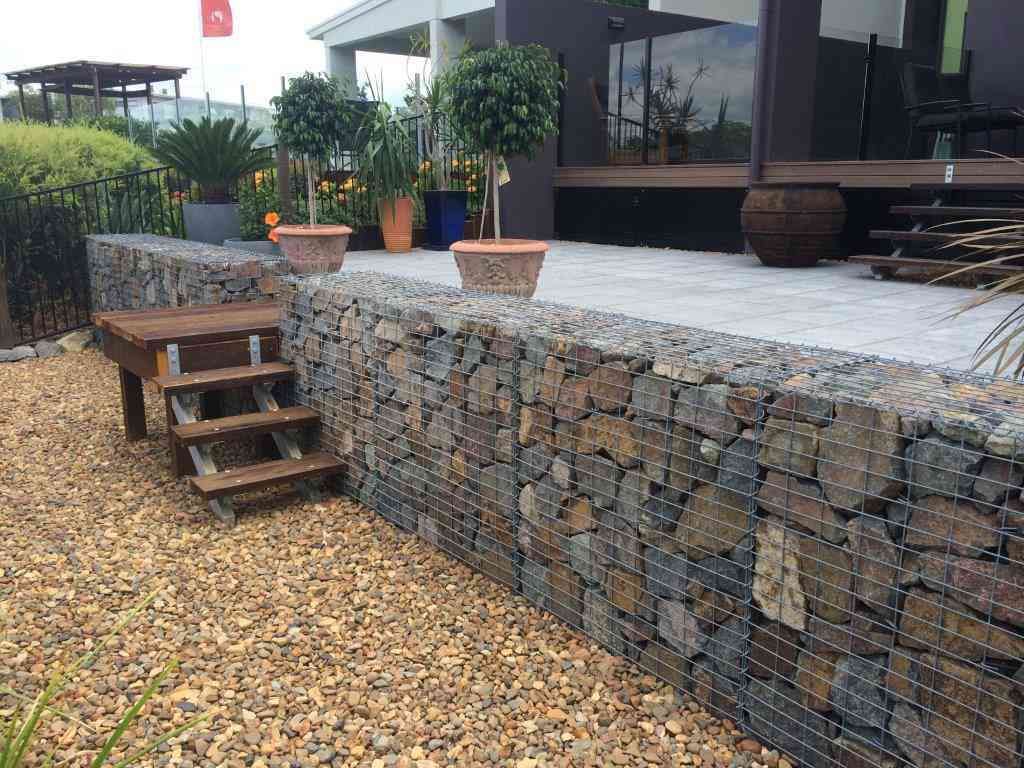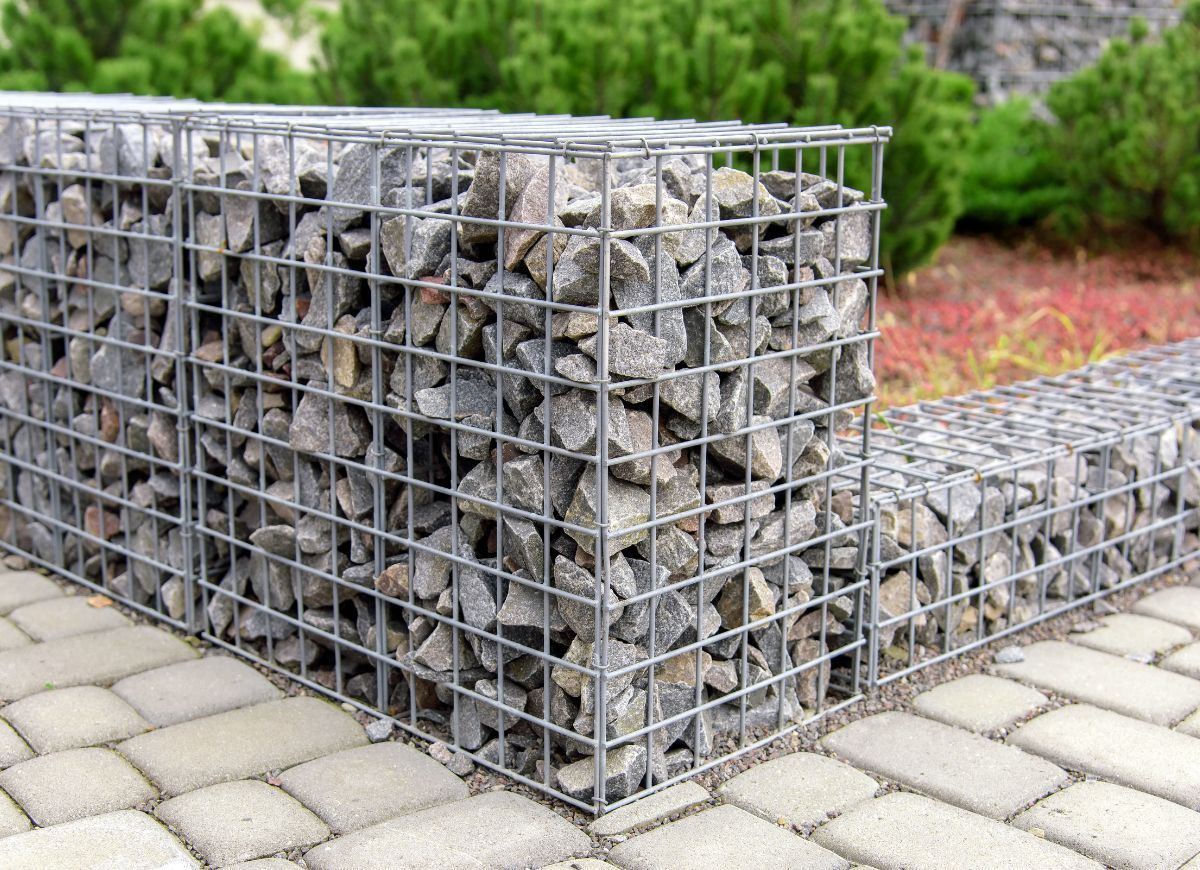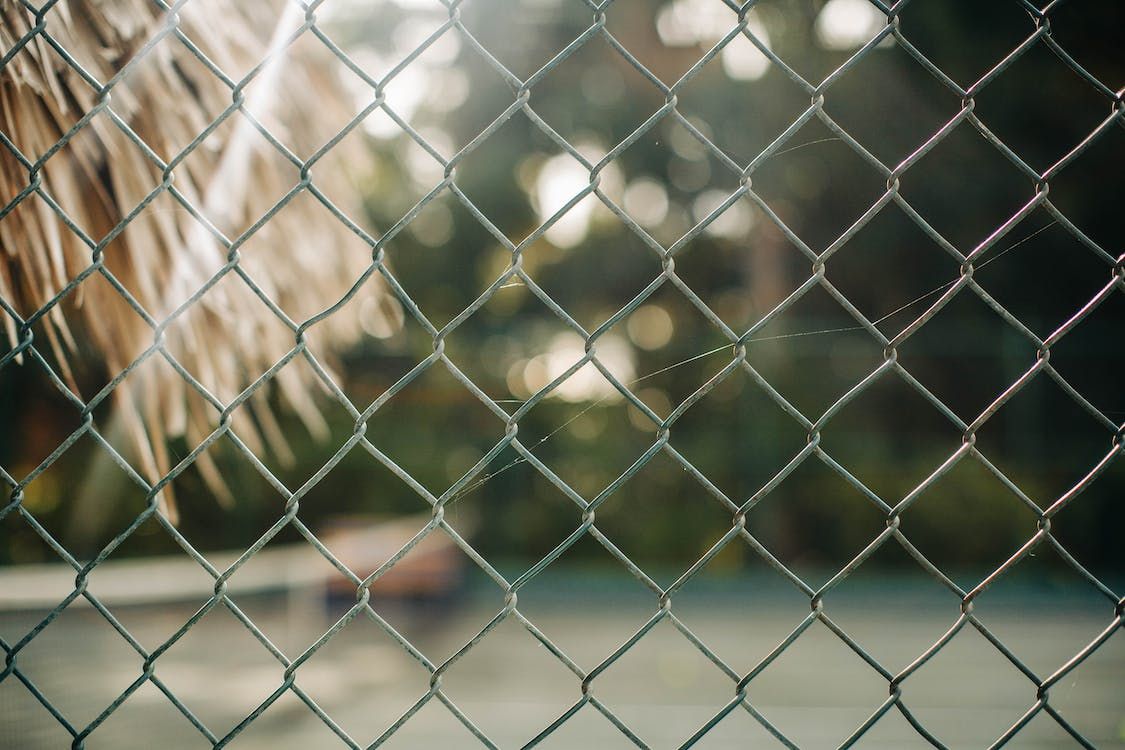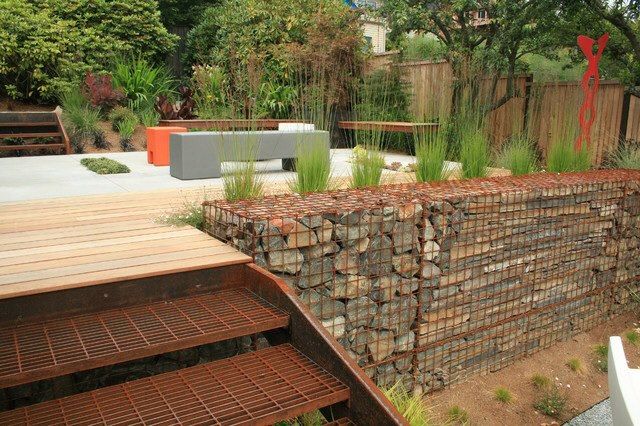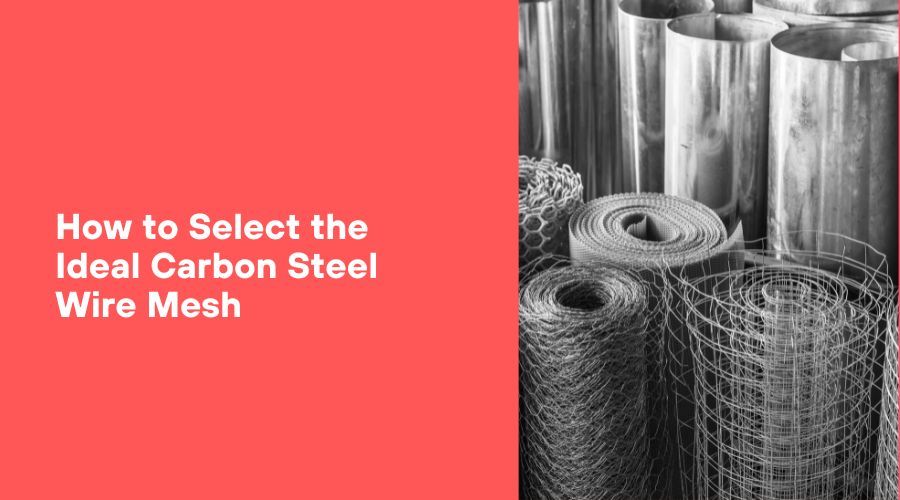How Much Does A Gabion Rock Wall Cost?
Gabion wall baskets have gained popularity for their versatility and effectiveness in various construction and environmental projects. These wire mesh containers with rocks offer a sustainable and aesthetically pleasing solution for everything from retaining walls to erosion control. Today we'll explore the various factors contributing to the cost of a retaining wall. Introduction Gabion wall baskets have been used for centuries as simple wire baskets filled with rocks to fortify military positions or control riverbanks. Over time, they have evolved and found applications in various civil engineering and environmental projects. While they offer numerous benefits, their cost can concern many. Let's delve into the retaining wall cost based on different important factors: Material Costs One of the primary factors contributing to the cost of gabion structures is the materials used in their construction. Gabion wall baskets typically comprise wire mesh or baskets filled with rocks or other locally available materials. The cost of these materials can vary widely based on several factors. 1.Wire Mesh: The wire mesh used in gabions can be costly, especially if it's high quality and designed to withstand the test of time. Cheaper or substandard wire mesh might reduce the initial cost but can lead to maintenance and repair expenses in the long run. On average, retaining wall costs (without filling material) can range from $25 to $100 USD per cubic foot of volume. Larger or custom-designed gabion cages may be on the higher end of this price range. This cost typically includes the wire mesh or basket used to construct the gabion cage. For example, a 3'x3'x3' gabion cage with a mesh size suitable for holding small to medium-sized stones might cost around $200 to $800 USD. The price can increase if you require specialty mesh or custom designs. 2.Fill Materials: The rocks or other materials used to fill gabion baskets also significantly determine the cost. The type of rocks, their availability in the region, and the cost of transportation can all impact the budget. Common rock types like gravel or crushed stone may cost around $40 to $70 per cubic yard. More decorative or specialty rocks, like river rocks or granite, can be more expensive, with prices ranging from $100 to $300 or more per cubic yard. The exact cost will depend on your location and the specific materials you choose. 3. Geotextiles: In some gabion applications, geotextiles are used as a lining material to prevent fine soil particles from entering the rock fill. Geotextiles add extra cost to the project. They are available in various types, with different materials and characteristics. Non-woven geotextiles are typically more cost-effective than woven geotextiles, and prices can vary based on the specific properties of the material (e.g., strength, permeability, and UV resistance). On average, you can expect to pay around $0.30 to $1.00 per square foot for geotextile lining. Labor Costs Gabion construction is labor-intensive. The process involves assembling wire baskets, filling them with rocks, and arranging them in the desired configuration. The labor costs associated with gabions can vary based on the workers' location and skill level. 1.Skilled Labor: Experienced workers are necessary for gabion assembly to ensure a stable and effective structure. Hiring skilled labor might be more expensive, but it's essential for the project's success. On average, skilled labor costs for gabion installation can range from $40 to $100 per worker. 2.Labor Market: Labor costs can vary widely, depending on the local labor market and the availability of skilled workers. In regions with a high demand for construction labor, wages might be higher. Engineering and Design Proper design and engineering are critical to ensuring that gabions serve their intended purpose effectively. This often requires the expertise of engineers or consultants, which adds to the project's overall cost. 1.Consultation Fees: Hiring engineers and consultants for the project's design and oversight can be a significant expense. However, their expertise ensures the gabion wall baskets safety and longevity. 2.Custom Design: Tailoring gabion structures to the specific needs of a project might require custom designs and engineering, which can further increase costs. Site Preparation Preparing the project site for gabion installation can be another substantial cost factor. This involves clearing, grading, and ensuring a stable foundation for the gabions. 1. Site Clearing and Grading: Depending on the state of the site, clearing vegetation, removing debris, and leveling the terrain can require extra labor and machinery. 2.Foundation Work: Preparing a stable foundation for gabions may necessitate additional work and expenses, especially in poor soil conditions. Permits and Regulations: Projects involving gabion wall baskets often require permits and compliance with local regulations, adding to the overall cost. 1.Environmental Assessments: In some cases, environmental impact assessments may be necessary, which can be costly and time-consuming. 2. Zoning and Land Use: Complying with zoning and land use regulations, including setbacks, can affect the design and placement of gabions, potentially leading to additional expenses. Maintenance Costs: While gabions are known for their durability and low maintenance, they may require upkeep or repairs over time. These maintenance costs should be factored into the overall expense. 1.Repairs: Damaged wire mesh or erosion of the fill material may require repairs, including the cost of materials and labor. 2.Maintenance Inspections: Regular inspections to identify issues early on can incur expenses. Transport and Access: The location of the project site can significantly impact the cost. If it's in a remote or hard-to-access area, the transportation of materials and equipment becomes more expensive, often requiring specialized vehicles and logistics. 1.Transportation Costs: Getting materials and equipment to remote sites can increase expenses due to longer travel distances and specialized transportation requirements. 2.Access Challenges: Difficult terrain or limited access roads can necessitate additional work to create access, which adds to the cost of a retaining wall. Quality of Materials: The quality of materials used for gabion construction is crucial and can significantly affect the cost. High-quality wire mesh and durable fill materials may be more expensive upfront but provide longer-lasting and more effective gabions. 1.Long-Term Savings: Investing in high-quality materials can result in long-term savings by reducing maintenance and repair costs. 2.Durability: High-quality materials ensure the gabion structure remains effective for many years because it can withstand harsh environmental conditions. Conclusion: While gabion retaining walls may initially appear expensive, understanding the factors contributing to their cost can help project planners make informed decisions. Materials, labor, engineering, site preparation, permits, maintenance, access, and quality of materials all play a role in determining the final expense of a gabion project. Ultimately, gabion wall baskets can offer a cost-effective and sustainable solution for various construction and environmental challenges. By carefully planning and considering all these factors, it's possible to harness the benefits of gabions while managing and justifying their costs.
View DetailsHow To Build A Gabion Wall? Step-By-Step Guide:
A gabion fence is a durable and aesthetically pleasing structure that can serve as a boundary wall, retaining wall, or garden feature. Gabions are essentially wire-mesh containers filled with rocks or other materials. Building a gabion fence involves several steps, from planning and designing to construction. Here's a basic guide on how to build a gabion fence: Materials and tools you'll need: 1. Gabion baskets or mesh panels 2. Galvanized wire or lacing wire 3. Rocks or stones for filling 4. Geotextile fabric (optional) 5. Wooden or metal posts (if needed for support) 6. Level 7. Shovel 8. Wire cutters 9. Rubber mallet 10. Gloves 11. Safety goggles Step-by-Step Guide: Design and Planning Designing and planning for a gabion retaining wall installation is a crucial step in ensuring the success and functionality of your project. You should start by determining the primary purpose of the gabion wall, because understanding the purpose aids in design decisions. Then assess the site conditions where you intend to install the gabion wall. Consider factors such as soil type, drainage, slope, and available space. And most importantly, choose the size and shape of the gabion baskets or mesh panels based on your design and the intended use of the wall. Prepare the ground Preparing the ground for a gabion wall installation is important to ensure the wall's stability and longevity. Start by clearing the area of any vegetation, debris, or obstacles. Level the ground using appropriate machinery or manual tools, depending on the size of the project. If you're dealing with a sloped area, consider creating a stable and level foundation by compacting the soil or using a layer of gravel. Adequate drainage is essential, so ensure proper grading or install a drainage system if needed to prevent water from accumulating behind the gabion wall. Additionally, you may choose to lay geotextile fabric to control soil erosion and improve drainage. Proper ground preparation sets the foundation for a successful gabion wall installation and helps prevent issues like settling or shifting over time. Install Posts When installing a gabion box, it's essential to place the corner and edge posts correctly for structural integrity. Begin by digging holes for the posts at each corner and along the edges of the gabion box layout, ensuring that they are deep enough to provide stability and support the anticipated height and weight of the wall. Set the posts vertically, making sure they are level and plumb, using a level or a plumb line. Secure the posts in place with concrete or a compacted gravel fill around them, ensuring that they are firmly anchored. This step is crucial in maintaining the overall shape and stability of the gabion box and should be completed before filling the boxes with rocks or other materials. Place Lining Choose a high-quality geotextile fabric designed for erosion control and filtration. Measure the inside dimensions of your gabion boxes, and cut the geotextile fabric into panels that match these dimensions. Lay one panel of geotextile fabric along the bottom and against one of the longer sides of the gabion box. Make sure there is enough overlap on the sides to provide a complete lining. Use wire or clips to secure the fabric in place. Attach the fabric to the mesh of the gabion box, ensuring it is taut and doesn't sag. Be sure to fasten the fabric securely at the corners and edges. This lining process is especially important when gabion boxes are used in applications such as retaining walls, where soil stability is a concern. Fill the Gabion Baskets Begin filling the gabion baskets with rocks or stones. Place larger and more attractive stones on the outer layers for a better aesthetic. Use a combination of smaller and larger rocks to ensure stability and prevent voids. Compact the rocks as you fill each layer to create a solid structure. After filling the gabion baskets, secure the tops by lacing the mesh panels or baskets together with galvanized wire. Make sure the tops are tightly closed. Stabilize the Fence Use a level to ensure the gabion fence is plumb and level. Make adjustments as needed by adding or removing rocks. The key to stabilizing gabion walls is proper construction and attention to detail during each phase of the installation process. This ensures the wall can effectively resist the forces it's designed to withstand and remain structurally sound over the long term. Finishing Touches Trim any excess wire using wire cutters. You can also add decorative elements, plants, or seating areas around the gabion fence to enhance its appearance. Maintenance Regularly inspect the gabion fence for any loose wires or shifting stones. If necessary, make repairs promptly to maintain its integrity. Tips for Building a Gabion Retaining Wall: • Choose the type of rocks or stones you want to use to fill the gabion baskets. Consider both the aesthetic and functional aspects, as well as the availability of suitable materials in your area. • Decide on the layout and pattern of your gabion wall. This can include straight lines, curves, terracing, or a combination of these. The pattern can also include variations in rock color and size to create an attractive aesthetic. • Check with local authorities and obtain any necessary permits or approvals for your gabion wall project. Regulations may vary depending on your location and the intended use of the wall. • Create a budget for your gabion wall project, taking into account the costs of materials, labor (if applicable), equipment, and any necessary permits. • Consider how the gabion wall will fit into your overall landscaping plan. You can integrate plants, paths, or other features to enhance its appearance. • Use a variety of rock sizes, with larger ones on the exterior for aesthetics and stability. Compact each layer thoroughly to eliminate voids and provide structural strength. • If your gabion wall project is complex or involves retaining a significant load, it's advisable to consult with professionals, such as engineers or landscape architects, to ensure safety and compliance with local regulations.
View DetailsHow To Choose Chain Wire Fencing Products: Height, Weight, And Size Selection?
Chain wire fencing is a popular and versatile choice when securing your property or creating boundaries. However, selecting the right chain wire fencing products involves more than just aesthetics. You must consider various factors, such as height, weight, and size, to ensure that your fencing effectively serves its intended purpose. This guide will explore the essential considerations for choosing the right chain wire fencing products. 1.Height Matters: The height of your chain wire fence is critical to consider when choosing the right product. It is the purpose, and local regulations should determine the height of your fence. Here are some common height considerations: a. Security and Privacy: A typical chain wire fence height ranges from 4 to 6 feet for residential properties. This provides a good balance between security and maintaining a sense of openness. If privacy is a concern, you may opt for taller fencing. b. Commercial and Industrial: In commercial or industrial settings, chain wire fences are often much taller, ranging from 6 to 12 feet or even higher, depending on the level of security required. c. Regulatory Requirements: Always check with local authorities for zoning or building code regulations dictating the maximum allowable fence height. Failure to comply with these regulations can result in costly modifications or fines. 2.Wire Gauge and Weight The wire gauge or thickness of the chain wire fencing is crucial for its durability and effectiveness. Chain mesh, also known as chain link fencing, is available in various thicknesses; you can choose between them to find out what best suite your requirements: Common chain link fencing thickness: 1. 9 Gauge (0.1483 inches or 3.77 mm): This is one of the thickest and most robust options available. It is commonly used in high-security and industrial applications where durability and strength are essential. 2. 10 Gauge (0.1350 inches or 3.43 mm): Slightly thinner than 9-gauge wire, 10-gauge wire is still quite strong and is suitable for many commercial and industrial applications. 3. 11 Gauge (0.1205 inches or 3.06 mm): This is a mid-range option, often used in commercial and residential applications. It provides good strength and durability. 4. 11.5 Gauge (0.1160 inches or 2.95 mm): A bit lighter than 11-gauge wire, 11.5-gauge wire is often used for residential chain link fences and lighter commercial applications. 5. 12 Gauge (0.1063 inches or 2.70 mm): This is one of the lighter options, primarily used for residential chain link fencing where security is essential but not necessarily the primary concern. Selection of thickness as per project The choice of wire gauge depends on the specific requirements of your project, including the level of security needed, the intended use of the fence, and local regulations. The following suggestions will help you decide about the right selection of thickness of chain link fencing. a. Residential Fencing: A lighter wire gauge (typically 11 to 12.5) is sufficient for most residential applications. This provides security and serves the purpose without being overly robust. b. Commercial and Industrial Fencing: When it comes to commercial and industrial settings, it's advisable to use a heavier wire gauge (commonly 9 to 10) to ensure higher security and longevity of the fence. c. Wire Coating: Chain wire fencing is often galvanized to protect against corrosion and rust. You can choose fencing with a vinyl or polymer coating for additional protection and aesthetics. This adds to the fence's weight and enhances its visual appeal. 3.Right Mesh Sizes The size of the mesh openings in your chain wire fence is another important consideration, as it impacts security and aesthetics. The diamond or mesh sizes vary depending on your specific needs and preferences. Standard mesh sizes for chain link fences are typically measured between the parallel sides of the diamond-shaped openings. The most common mesh sizes for chain link fences are: 1. 2-inch Mesh (2": 2" mesh): This is one of the most common and widely used mesh sizes for chain link fences. It strikes a balance between security and visibility. It is suitable for many residential and commercial applications. 2. 2.25-inch Mesh (2-1/4": 2.25" mesh): Slightly more prominent than the 2-inch mesh, this size is used when more visibility or air circulation is desired. It is also suitable for various applications, including residential and commercial uses. 3. 1.75-inch Mesh (1-3/4": 1.75" mesh): Smaller than the 2-inch mesh, this option provides higher security and is often used in areas where privacy and security are a priority, such as commercial and industrial settings. 4. 1.5-inch Mesh (1-1/2": 1.5" mesh): This size is even smaller than the 1.75-inch mesh and is used for applications with maximum security, such as high-security facilities. 5. Custom Mesh: Some suppliers offer custom mesh sizes, allowing you to choose a specific size that suits your needs. This option is advantageous when you have particular requirements for your chain link fence. Select the right size of mesh wire for your project a. Smaller Mesh: A smaller mesh size provides higher security and prevents intruders from squeezing through. It's a good choice for areas where security is a top priority, such as industrial facilities or storage yards. b. Larger Mesh: Fences with larger mesh openings are more visually open and are suitable for applications where aesthetics are essential. They are often used in residential and public spaces. c. Customization: Some suppliers offer custom mesh sizes, allowing you to balance security and aesthetics to meet your specific needs. Final tips for the proper selection of wire mesh products Choosing the proper chain link mesh involves considering various factors to ensure it meets your specific needs and preferences. Here are some of the tips for the appropriate selection of wire mesh products to help you make a suitable buying decision: 1. Determine Your Purpose: Before selecting the chain link mesh, clarify your fence's primary purpose. Is it for security, aesthetics, privacy, or some combination of these factors? Understanding your specific needs will guide your choices. 2. Consider Security Requirements: If security is a top priority, opt for a thicker wire gauge, such as 9 or 10 gauge, to enhance strength and durability. Smaller mesh sizes also provide more security. This is especially important for commercial and industrial applications. 3. Assess Privacy Needs: Choose a chain link mesh with smaller mesh openings (e.g., 1.75 inches or smaller) if you need privacy. Additionally, you can consider mesh with privacy slats, which can be inserted into the mesh to reduce visibility. 4. Think About Aesthetics: For more open and visually transparent fencing, you can go for a larger mesh size (e.g., 2-inch or larger). You may also consider vinyl-coated chain link mesh, which offers a range of color options to enhance the appearance of your fence. 5. Check Local Regulations: Be aware of any local zoning or building code regulations that may dictate your fence's type, height, or appearance. Ensure your choice complies with these regulations. 6. Select the Right Wire Gauge: Choose a wire gauge that aligns with your security needs and budget. Thicker gauges (9 or 10) are more robust and durable but may be more expensive. Lighter gauges (11 or 11.5) are more cost-effective and suitable for less demanding applications. 7. Evaluate Coating Options: Chain link mesh is often available with different coatings. The two most common options are galvanized and vinyl-coated. Galvanized mesh is corrosion-resistant, while vinyl-coated mesh adds color and protects against the elements. Select the coating that best suits your climate and aesthetic preferences. 8. Consider Customization: Some suppliers offer customization options, allowing you to tailor the chain link mesh to your needs. This can include selecting a unique mesh size, wire gauge, or coating. 9. Review Accessories and Framework: Don't forget to consider the supporting framework, including posts, rails, tension wires, and gates. Ensure they are compatible with your chosen chain link mesh and are appropriate for your project's size and purpose. 10. Get Quotes and Compare: Reach out to multiple suppliers and request quotes for the chain link mesh, framework, and installation. Comparing quotes will help you find the best deal that meets your needs and budget. 11. Consult with Experts: If you need more clarification on any aspect of your chain link mesh selection, consult with fencing professionals or suppliers. They can provide valuable insights and recommendations based on your specific project requirements. 12. Consider Long-Term Maintenance: Think about the long-term maintenance of your chosen chain link mesh. Regular inspections and maintenance may be needed to ensure the fence remains in good condition and serves its purpose effectively. By carefully considering these factors and consulting with experts, you can confidently select the suitable variety of chain link mesh that suits your specific project and objectives.
View DetailsHow Do You Keep A Gabion Wall Straight?
Gabion walls are functional and add a unique aesthetic to landscaping and construction projects. However, ensuring your gabion wall remains straight is crucial to its structural integrity and visual appeal. This comprehensive guide will explore techniques and tips for keeping your gabion wall straight. From proper site preparation to careful construction, we'll cover everything you need to know to create a sturdy and attractive gabion wall. Tips for keeping gabion wall straight and sturdy 1.Site Preparation: Before you start constructing your gabion wall, thorough site preparation is essential. The foundation and the terrain upon which the wall will be built play a significant role in its stability. Here are the key steps to ensure proper site preparation: Clear the Area: Remove any vegetation, debris, or obstructions from the construction site. This includes rocks, roots, and organic matter that could affect the wall's stability. Level Ground: Ensure that the ground is level and compacted. Use a surveyor's or laser level to check for any unevenness, as even a slight slope can impact the wall's alignment. Proper Drainage: Address drainage issues to prevent water from accumulating behind the gabion wall. Adequate drainage is crucial for controlling erosion and maintaining the wall's stability over time. 2. Foundation A solid foundation is the backbone of a straight gabion wall. It provides the necessary support to prevent leaning or tilting. Here's how to establish a sturdy foundation: Excavation: Dig a trench along the wall's length and width. The depth of the trench will depend on the wall's height and the recommendations of your project engineer. Typically, a depth of 1 to 2 feet is suitable. Compaction: Compact the soil at the bottom of the trench thoroughly. You can use a plate compactor or a hand tamper to achieve the desired level of compaction. Geotextile Fabric: Place a layer of geotextile fabric at the bottom of the trench. This fabric will act as a barrier to prevent soil from washing out between the gabion baskets and aid in drainage. 3. Choosing the Right Gabion Baskets Selecting the appropriate gabion baskets is crucial for a straight and stable wall. Consider the following factors: Size and Strength: Choose gabion baskets to withstand the expected loads and environmental conditions. Heavier-duty baskets may be required for taller or broader walls. Mesh Size: The mesh openings should be appropriate for the size of the stones you plan to use as fill. Smaller rocks may require smaller mesh openings to prevent them from falling out. Material: Opt for high-quality galvanized or stainless steel gabion baskets to ensure they resist corrosion and remain durable over time. 4 Filling the Gabion Baskets The filling process is a critical step in keeping your gabion wall straight. Correctly filled baskets provide the necessary weight and stability. Here's how to do it: Select Suitable Stones: Choose stones that are uniform in size and shape. Rounded river stones or angular quarry rocks work well. Avoid using irregularly shaped stones that can create voids and weaken the wall. Layering: Fill the gabion baskets in even layers, starting from the bottom. Compact each layer with a tamper or by hand to ensure a tight fit. Avoid overfilling, as this can cause bulging and instability. Interlock Stones: Place larger stones on the outer layer to interlock and create a visually appealing face. Fill the inner layers with smaller rocks to maximize stability. 5. Proper Basket Connection: To maintain the straight alignment of your gabion wall, ensure that the baskets are securely connected. Here's how to do it: Overlap Baskets: Overlap the edges of adjacent gabion baskets by at least 3 to 6 inches to create a strong connection. Use wire or spiral connectors to secure the overlap. Secure the Tops: To prevent sagging or leaning, use bracing wires or rods at the top of the wall. These should be anchored to a stable structure or embedded deep into the ground. 6. Regular Maintenance Once your gabion wall is constructed, it's essential to perform regular maintenance to ensure it remains straight and stable over time. Inspect for damage: Periodically inspect the wall for any signs of damage, such as bulging, leaning, or erosion. Repair as Needed: If you notice any issues, address them promptly by repairing damaged areas and reinforcing weak spots. Monitor Drainage: Monitor the wall's drainage system to ensure water flows away from it effectively. Conclusion: A straight and sturdy gabion wall serves its functional purpose and enhances the overall aesthetics of your landscape or construction project. Following these guidelines for proper site preparation, foundation construction, basket selection, filling techniques, basket connection, and regular maintenance, you can create a gabion wall that stands the test of time while adding a touch of elegance to your surroundings.
View DetailsTips And Strategies For Negotiating With Gabion Box Suppliers/Manufacturers
Negotiating with suppliers becomes a crucial skill to secure the best deal when embarking on a construction, landscaping, or erosion control project involving gabion boxes. Negotiations not only impact your budget but also influence project timelines and the overall success of your endeavor. In this blog, we'll delve into essential tips and strategies to help you navigate the negotiation process effectively when dealing with suppliers. Thorough Research Sets The Stage Negotiation begins with knowledge. Before engaging with suppliers, research the current market prices, the types of gabion baskets available, and the reputations of different suppliers. Armed with this information, you'll have a solid foundation for negotiations and can confidently approach potential partners. Define Your Project Requirements Clear communication is key. Define your project requirements in detail, including the quantity, size, and specifications of gabion boxes needed. This precision will help suppliers provide accurate quotes and ensure a clear understanding later. Obtain Multiple Quotes Reaching out to multiple Gabion box sellers is a savvy move. Request quotes from different suppliers to gain a comprehensive understanding of the price range and the value offered. This information empowers you to make informed decisions and negotiate better terms. Leverage Bulk Purchases Consider negotiating bulk pricing if your project requires substantial gabion baskets. Many suppliers offer discounts for larger orders, significantly impacting your project's overall cost. Prioritize Delivery Schedules Project timelines are critical. During negotiations, emphasize the importance of timely deliveries that align with your project schedule. Ask about rush order options and any associated costs. Flexible Payment Terms Discuss payment terms that are feasible for your budget. Inquire about potential discounts for early payments or explore installment options that align with your financial planning. If you anticipate future projects, highlight this to the supplier. Demonstrating your interest in a long-term partnership might encourage them to offer more favorable terms to establish ongoing collaboration. Value-Added Services Matter Beyond the gabion boxes, inquire about any value-added services the supplier can provide. Services like installation assistance, technical support, or customization options can enhance the overall value of your partnership. Demonstrate Industry Knowledge Suppliers appreciate well-informed clients. Use industry data, market trends, and competitor insights to support your negotiation points. This demonstrates your knowledge and credibility, making your negotiation stance stronger. Leverage Competition Wisely If you've received more competitive offers from other suppliers, consider using this information to your advantage. Notify your preferred supplier about these offers and explore whether they can match or exceed them. Building a Relationship Negotiations are a two-way street. Approach the process with professionalism and respect. Building a positive rapport with the supplier can foster a collaborative atmosphere that encourages them to be more flexible. Be Willing to Walk Away Negotiating requires a degree of assertiveness. If discussions don't yield satisfactory results, consider alternative suppliers. Sometimes, the willingness to walk away can prompt the supplier to improve their offer. Understand Supplier Constraints Suppliers have their limitations, such as production capacities and material availability. Understand these constraints and explore mutually beneficial solutions that cater to both parties' needs. Put It in Writing Once an agreement is reached, ensure that all terms are documented in a written contract. This formalizes the agreement, prevents misunderstandings, and provides a reference point for future discussions. Other Useful Tips For Getting An Edge In Your Negotiation Active Listening: Pay close attention to the other party's statements, needs, and concerns. Active listening helps you grasp their perspective and tailor your responses accordingly. Seek Understanding: Ask open-ended questions to understand the motivations and concerns of the other party. This information helps you tailor your proposals to their needs. Know When to Walk Away: Understand your limits and be willing to walk away if the negotiation isn't heading in a favorable direction. This demonstrates your commitment to fair terms. Follow Through: Once an agreement is reached, promptly fulfill your commitments. Honoring your word builds trust and sets a positive tone for future interactions. Be Flexible: While clear objectives are important, be open to adjusting your approach based on new information or unexpected insights during the negotiation. Conclusion: Negotiating with gabion box dealers requires a strategic approach that balances preparation, communication, and flexibility. You can effectively navigate negotiations and secure favorable terms by conducting thorough research, defining your project requirements, and leveraging your industry knowledge. Remember that negotiations are about finding common ground that benefits both parties, leading to successful projects and productive supplier partnerships.
View DetailsHow to Select the Ideal Carbon Steel Wire Mesh?
Carbon steel wire mesh is a versatile and widely used material that finds its application in various industries, including construction, agriculture, manufacturing, and more. Its durability, strength, and cost-effectiveness make it a preferred choice for different purposes. However, with numerous options available in the market, selecting the right carbon steel wire mesh can be a daunting task. In this guide, we'll walk you through the essential factors to consider when choosing the ideal carbon steel wire mesh for your specific needs. 1. Mesh Size and Wire Diameter The mesh size and wire diameter are crucial factors that determine the functionality of the wire mesh. Mesh size refers to the number of openings per linear inch in the mesh, while wire diameter indicates the thickness of the individual wires. The right combination of mesh size and wire diameter depends on the intended application. For instance, smaller mesh sizes and thicker wire diameters are suitable for heavy-duty applications that require higher strength and durability. 2. Material Grade Carbon steel wire meshes come in different material grades, each with varying properties that make them suitable for specific environments. The two common material grades are low carbon steel and high-carbon steel. Low carbon steel meshes are ideal for applications that require moderate strength and good corrosion resistance, such as general filtration and sieving. High-carbon steel meshes, on the other hand, offer greater strength and are suitable for applications that involve heavy loads and abrasive materials. 3. Weave Type The weave type of carbon steel wire mesh affects its strength, durability, and filtration capabilities. Common weave types include plain weave, twill weave, and Dutch weave. Plain weave is the simplest and most common weave type, offering equal strength in both directions. Twill weave provides greater strength in one direction and is suitable for applications that require extra stability. Dutch weave has a higher mesh count in one direction, making it excellent for fine filtration purposes. 4. Open Area and Flow Rate Open area refers to the proportion of open space in the wire mesh, while the flow rate is the amount of fluid or air that can pass through the mesh. These factors are crucial in applications such as filtration, where the efficiency of the mesh depends on its ability to allow passage while retaining particles. A higher open area and flow rate are desirable in situations where quick filtration or efficient ventilation is necessary. 5. Corrosion Resistance Considering the environment in which the carbon steel wire mesh will be used is essential to determine its required level of corrosion resistance. Carbon steel is susceptible to corrosion, especially in humid or corrosive environments. In such cases, it's recommended to opt for a wire mesh with a protective coating, such as galvanization, to enhance its longevity and performance. 6. Application-Specific Considerations Every industry and application has unique requirements, and selecting the ideal carbon steel wire mesh requires a thorough understanding of these demands. Whether it's for sifting, filtering, security, or reinforcement, the mesh must be tailored to meet the specific needs of the project. Consult with experts or suppliers who can guide you in selecting the right mesh type, size, and specifications based on your intended application. Summary Selecting the ideal carbon steel wire mesh involves careful consideration of various factors such as mesh size, wire diameter, material grade, weave type, open area, flow rate, and corrosion resistance. Understanding the specific requirements of your application is key to choosing a mesh that offers optimal performance, durability, and longevity. By taking these factors into account and seeking advice from professionals in the field, you can confidently choose the perfect carbon steel wire mesh that meets your needs and ensures successful project outcomes.
View Details
